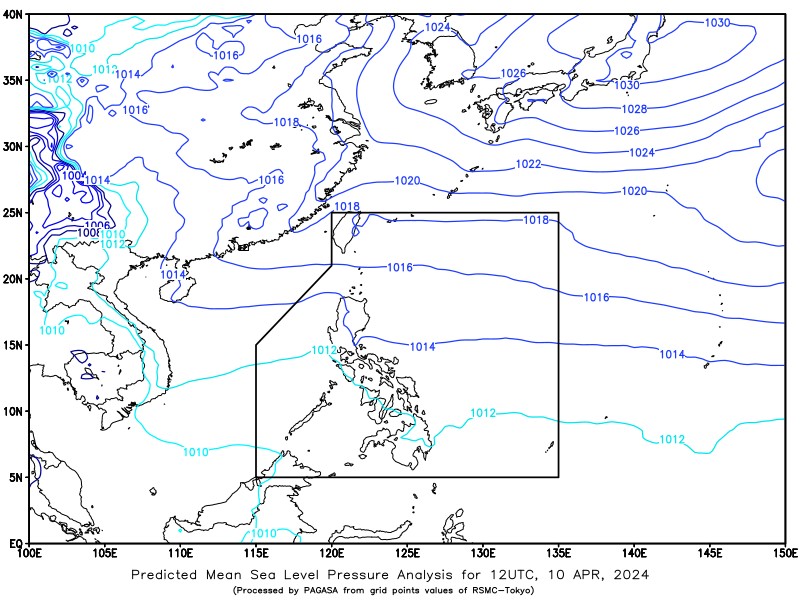Easterlies to bring cloudy skies over PH
Published April 10, 2024 4:32pm The easterlies will continue to bring cloudy skies over the Philippines, according to PAGASA on Wednesday. In its afternoon bulletin, PAGASA forecast partly cloudy to cloudy skies with isolated rainshowers or thunderstorms in Metro Manila and the rest of the country, caused by easterlies. Possible flash floods and landslides may […]


The easterlies will continue to bring cloudy skies over the Philippines, according to PAGASA on Wednesday.
In its afternoon bulletin, PAGASA forecast partly cloudy to cloudy skies with isolated rainshowers or thunderstorms in Metro Manila and the rest of the country, caused by easterlies.
Possible flash floods and landslides may occur in several parts of the country due to said weather condition.
Moderate to strong winds with moderate to rough seas may be expected in the northern and western sections of Northern Luzon, while the rest of the country is forecast to have light to moderate winds with slight to moderate coastal waters.
Sunrise in Metro Manila will be at 5:46 a.m. on Thursday.
Meanwhile, PAGASA earlier said hot temperatures are expected to be felt until mid-May.
The Weather bureau reported heat indexes breaching 40 degrees Celsius in various places in the country such as the Camarines Provinces, Palawan, Cavite City, and Zamboanga City which have experienced 42-43 degrees Celsius heat indexes.
PAGASA Weather Specialist Benison Estareja told GMA Integrated News that Metro Manila may record 40-41°C heat index tomorrow.
PAGASA defines heat index as the measure of the temperature that a person feels, which is different from the actual air temperature. It is computed by factoring in the humidity as well as air temperature.
In areas experiencing dangerous level heat index, which is from 42°C to 51°C, heat cramps and heat exhaustion are likely, according to PAGASA. Heat stroke is also possible with continued exposure.
In its health advisory, DOH reminded the following first-aid tips should a person suffer from heat stroke:
- transfer the person to a cooler or shady area;
- remove clothes that could add up to body heat;
- apply cold compress on the underarm, groin, neck, and back; and
- soak the person in cold water, if possible.
—Jiselle Anne Casucian/ VAL, GMA Integrated News














